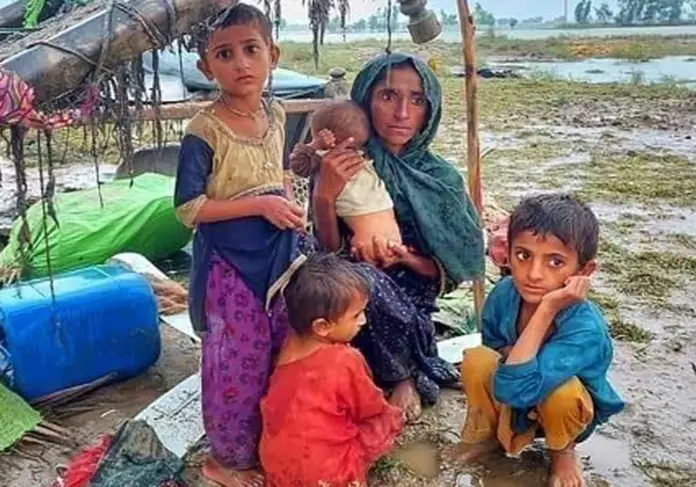Thousands of displaced residents in Sindh are suffering from infectious and water-borne diseases after heavy flooding, with the death toll passing 1,500 and more than 90,000 people treated for water-borne diseases in a day.
The Sindh Directorate General Health Services said in a report released on Friday that 92,797 people were treated on September 15 and out of these, 588 were confirmed to have malaria with another 10,604 cases.
According to the report, 28 cases of dengue, 20,064 skin disease cases, and 17,977 cases of diarrhea were all reported on Thursday.
Since July 1, around 2.3 million people have been treated in the flooded area in field and mobile hospitals that have been set up.
According to the NDMA’s daily report, the number of flood-related injuries in the last 24 hours increased to nine, bringing the total to 12,758.
The government and the United Nations have attributed the rising floods to climate change.
Pakistan received 391mm of rain in July and August, which is approximately 190% more than the 30-year normal. In Sindh, the figure was 466pc, which makes it the worst-affected area.







